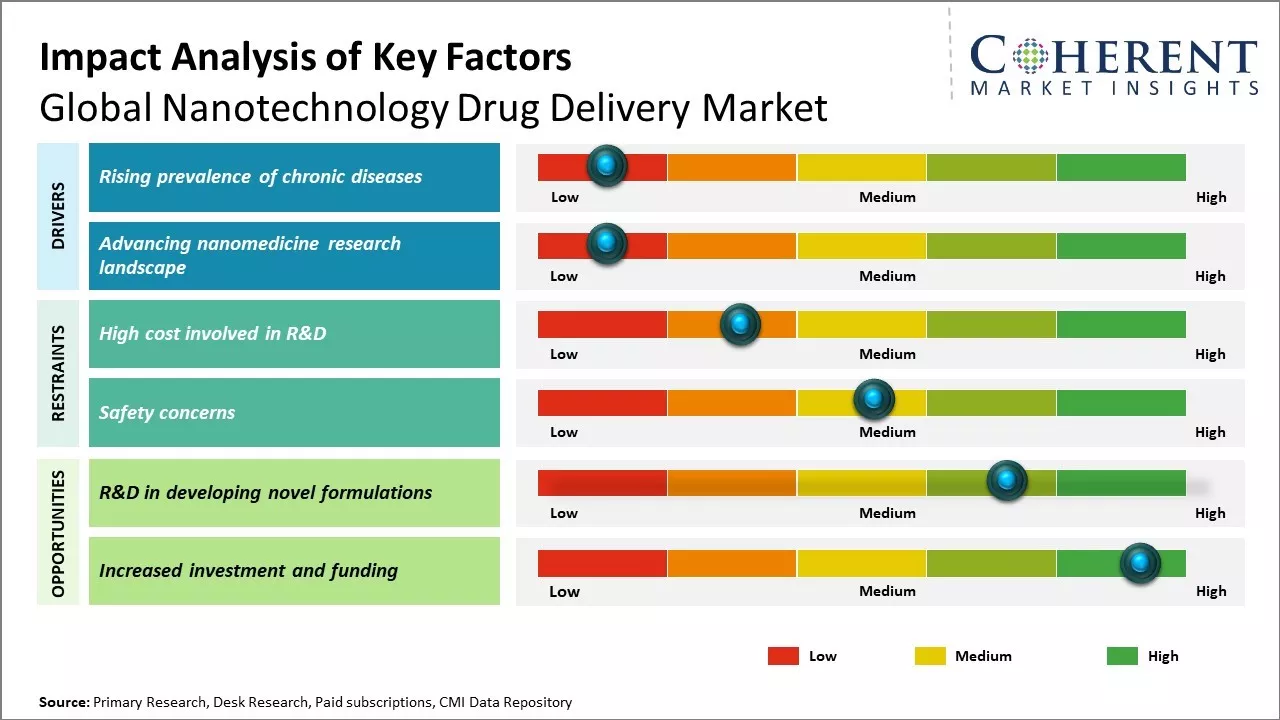Global nanotechnology drug delivery market is estimated to be valued at USD 108.08 Bn in 2025 and is expected to reach USD 228.82 Bn by 2032, exhibiting a compound annual growth rate (CAGR) of 11.3% from 2025 to 2032. Nanotechnology drug delivery utilizes nanomaterials and nanodevices to transport therapeutic agents in the body. Increased precision and effectiveness of these systems over conventional drug delivery methods can drive the market growth.

To learn more about this report, Request sample copy
The market is expected to witness significant growth over the forecast period due to rising adoption of nanotechnology drug delivery for various disease indications. Active research on utilizing nanocarriers for delivery of different types of drug molecules such as proteins, genes and chemotherapeutic agents can also drive the market growth. Furthermore, continuous pipeline development of nanomedicines and their commercialization can boost demand.
Rising prevalence of chronic diseases
Increasing prevalence of chronic diseases such as cancer, cardiovascular diseases, diabetes and other lifestyle diseases can boost demand for more effective drug delivery systems. According to the World Health Organization, chronic diseases accounted for approximately 60% of all deaths globally in 2020. Developing regions have been particularly impacted due to risk factors like increasing pollution levels, growing adoption of sedentary lifestyles and aging populations. Many traditional drug delivery methods suffer from low bioavailability, short half-life and systemic toxicity issues. Nanotechnology approaches can overcome these challenges by enabling targeted delivery and controlled release of drugs inside the body. For example, nano-carriers can be designed to encapsulate antineoplastic drugs and transport them specifically to tumor sites, thus, reducing side effects and improving treatment outcomes. Such patient-centric product development focusing on minimizing disease burden as well as healthcare costs appeals to both patients and providers alike. For instance, in December 2023, according to the United Health Foundation’s America’s Health Rankings 2023 Annual Report, the prevalence of eight chronic health conditions in the U.S. has reached unprecedented levels. These conditions, including arthritis, asthma, cancer, cardiovascular diseases (CVDs), chronic kidney disease, chronic obstructive pulmonary disease (COPD), depression, and diabetes, have reached their highest recorded levels since tracking began in 1990.
Joining thousands of companies around the world committed to making the Excellent Business Solutions.
View All Our Clients